Cover Story – An “Open” Book
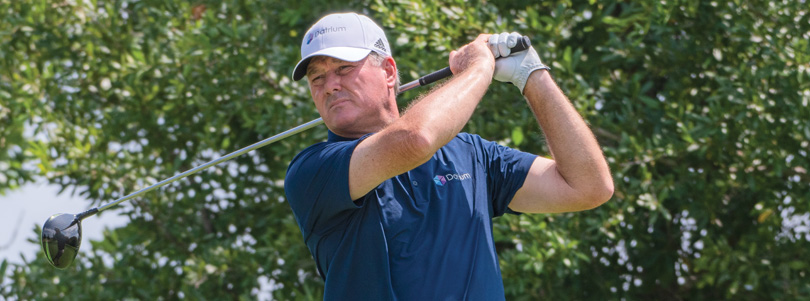
AVIDGOLFER: You were born in Illinois. What was your childhood like?
Todd Hamilton: My childhood was nice. I grew up playing golf, baseball and basketball. Golf, I didn’t have too many kids in my school that played, so I played a lot with my father and his friends. I think that made me mature for my age, but I bet my wife would disagree with me.
AG: Where did you learn to play golf?
TH: I learned to play golf on a small 9-hole course in Biggsville, Illinois named Hend-Co Hills Country Club. The name stood for Henderson County. It wasn’t much of a course, but the greens were good for a little course in a town of about 500 people.
AG: You said you played basketball and baseball as a kid. Any good stories from the hardwood or the diamond?
TH: I played basketball all the way through high school and I played little league until I was about 13. My claim to fame in baseball was a no-hitter in the final game I played. We won the championship 8-0.
AG: What was your favorite course to play growing up?
TH: My favorite course to play growing up was in Monmouth, Illinois. It was an 18-hole public course called Gibson Woods. Very tree lined, not very long, but they always had good greens and you had to drive the ball well to score there.
AG: Being from Illinois, how did you end up as a Sooner?
TH: There was a family that owned a radio station in Galesburg, Illinois, which is the town I was born in and I believe their daughter-in-law played golf at OU. Word got to the coaches down there that I could play a little bit and I had some good finishes in some national junior events and I won the Illinois state championship a couple times, so I like to believe it was my golf prowess that led me there, but I think there was a little help from the owners of that radio station as well.
AG: What was your experience like at OU?
TH: My experience at OU was great. I have always been a big sports person and while I was there in the 80’s they had a lot of great teams. Great basketball and obviously great football. I think in those four years we had seven men’s teams that were in the top-25 at some point. We had access to a lot of great courses in Norman and also Oak Tree National up in Edmond. The coach there kind of became a second father to me, so it was a great four years in Norman.
AG: Been to any OU/Texas games?
TH: While I was there, I only went to one. Since I have been out of school I have been to about a dozen. I might be biased, but I think it’s one of the great spectacles in sports. I know UT has kind of had our number, but it won’t be long before OU catches them.
AG: What about Miami in 2001? Manage to make it to see your Sooners handle Florida State?
TH: I didn’t make it down there. I did watch it though and I had a $50 bet with a Florida State buddy. Either OU had to win outright or Florida State had to cover the point spread, which I think was like 13. Anything else we were going to call it a wash. It was a fun game and a memory I will always cherish.
AG: You played for a while in Japan. What are some of your favorite memories of the far East?
TH: I was fortunate enough to have won 11 tournaments in the 12 years I spent on the Japanese Tour. My favorite year was the 2003 season. I had struggled for four or five years and I had really played poorly during that stretch. I got a new driver about the fourth tournament of the year and I ended up winning the tournament that week and went on to win three more times that season. I ended up getting through to the finals of the PGA TOUR qualifying school by finishing top 3 on the Japanese money list. I think I got there by about $5,000. I got my card that fall and then played on the PGA as a 38-year-old rookie. That 2003 year was probably the most fun I have ever had playing golf.
AG: What’s the most interesting course you had a chance to play over there?
TH: The Yomiuri Country Club outside of Osaka, Japan was really interesting. There were so many hills they had chair lifts to carry you to the next tee box, some of them were about 150-yards or more. Unfortunately, after the earthquake they had in Kobe in 1995, they no longer thought the lifts were safe, so after that they started shuttling players to the next tee in carts. It was pretty interesting.
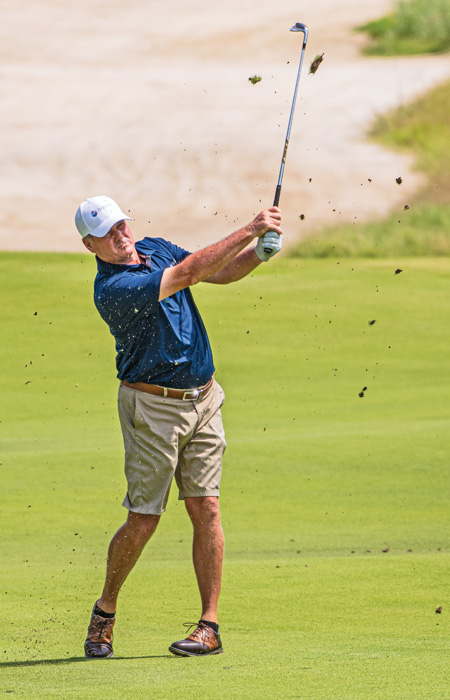
AG: Did you learn the language pretty well?
TH: As much time as I spent there, I did a pretty poor job of learning the language. I could read a bit of it though. There are three different types of writing there. There’s Kanji, Katakana and Hiragana. The Katakana was the one I could read the best. I would probably give myself a D in speaking the language, but reading it, I would give myself a C+ or B-.
AG: It’s been 15 years, but is there anything that still sticks out from that week at Troon?
TH: I remember a couple times during that final round after a good hole I was able to lock in on my mom’s cheers among the thousands of people that were following us. I always found it strange that I was able to single out her cheers among all the others. Strange, but true.
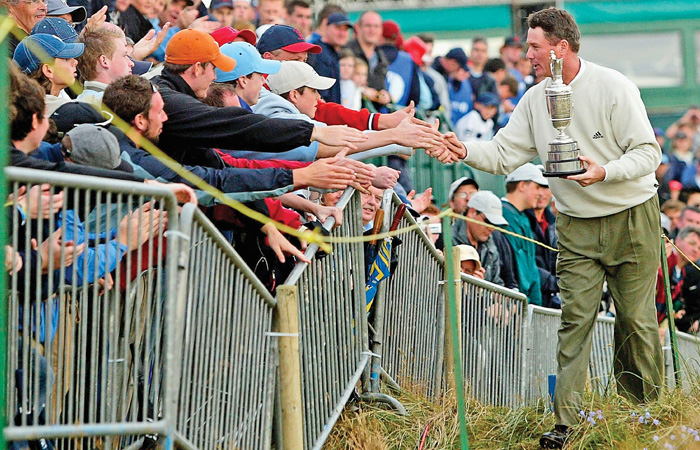
AG: What was the night before the final round like? You manage to get any sleep?
TH: I think I got about two or two and a half hours of sleep the night before the final round. The place we were staying had good cable, so I just channel surfed. I wasn’t nervous, I was just anxious to get going. I was playing well, so I was ready to get after it. Luckily, we didn’t tee off until about two in the afternoon, so I was able to relax most of the morning.
AG: You made a bogey on the second hole in the final round. Was there any doubt that crept into your mind at that point? Or is that a situation where you just know you need to find an opportunity to bounce back?
TH: The bogey wasn’t that big of a deal. I knew I likely wouldn’t get through the round bogey-free and I also knew there were some birdies out there that would offset the early hiccup.
AG: A shot you used quite a bit was a bump and run with a utility club. Do you remember when you specifically started practicing that shot? Was it just for the Open championship, or was it something that you had always tinkered with?
TH: I really didn’t use the utility club for that bump-and-run until that week. I remember walking back from the range to the first tee that week and there was a little chipping area and I would drop 10 or 15 balls about 10 to 15 steps off the green and I just used that club to putt them up to see how they would react. I felt it was a better option than using a 6-iron or 5-iron and it was definitely a better option than a sand wedge or lob wedge and I felt like I would have to hit a putter too hard to make that an option. The hybrid really worked out well. It was 14-degrees so it would kind of skid across the grass and then take off rolling. You just took a little putting stroke with it and it worked out great.
AG: That Sonartec Utility wood? You still have it?
TH: I still have it. I used it quite a bit the rest of that season and even a bit at the beginning of the following year. It’s a 17 degree, but the club maker bent it to 14-degrees. I basically used it as my three-wood.
AG: Did you ever hear anything from Sonartec about an increase in sales after that club was so prominently displayed on TV?
TH: My friend that worked for Sonartec told me they received about 5,000 emails about that club in the days that followed the Open. I think he told me they did about $2 million in sales the following week, so, it was good advertising for them. I didn’t use the club because they were paying me, I used it because I liked it and it really worked well for me.
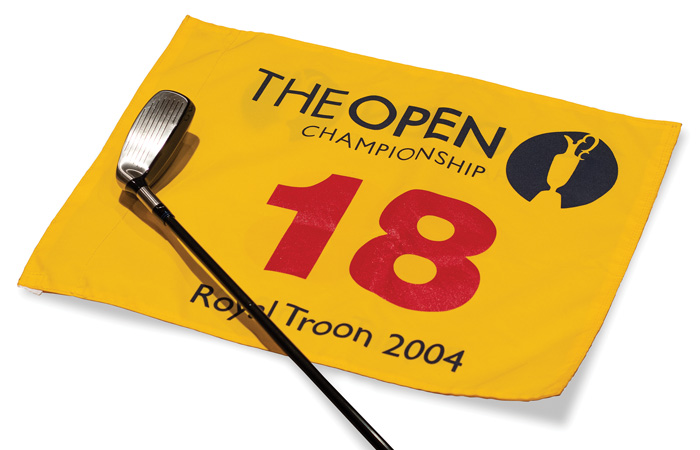
AG: Was it more satisfying to win over someone like Ernie Els, or did your opponent not make any difference?
TH: It was definitely satisfying to beat a player of the stature of Ernie Els. I know he was very dejected after that, I could see it in his face, so I was happy to see him win the Open a few years later. I think the way the victory happened, not just beating a player of Ernie’s caliber, but having the lead going into the last round, losing it, gaining it back, going into a playoff and fighting through the aggregate playoff against someone like Ernie is something I will remember the rest of my life.
AG: Is there anything you’d change in the aftermath of the Open win?
TH: I wouldn’t change a thing. I have a lot of memories that I will carry with me the rest of my life. My children were there, although I wish they were a little older, I think they were were six, four and about 18 months. My wife was there, my mother was there, so it was a truly magical four days in Scotland.
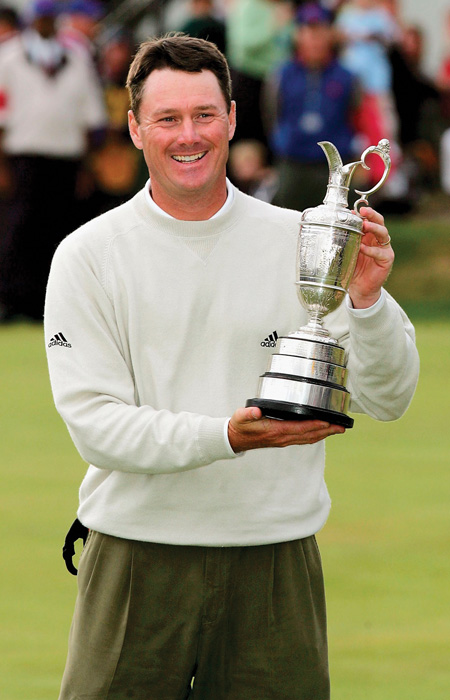
AG: What’s the craziest thing or endorsement opportunity you got after the win?
TH: I didn’t have any crazy endorsement opportunities, but I did get two really nice gifts. Sonartec sent me a very nice watch that was engraved on the back, and the other one was from Ping. I used a Ping putter that week and if you win with a Ping on any of the major tours, they give you a replica putter, if it’s a major, they give you a replica that is solid gold. Two really cool gifts that I will always cherish.
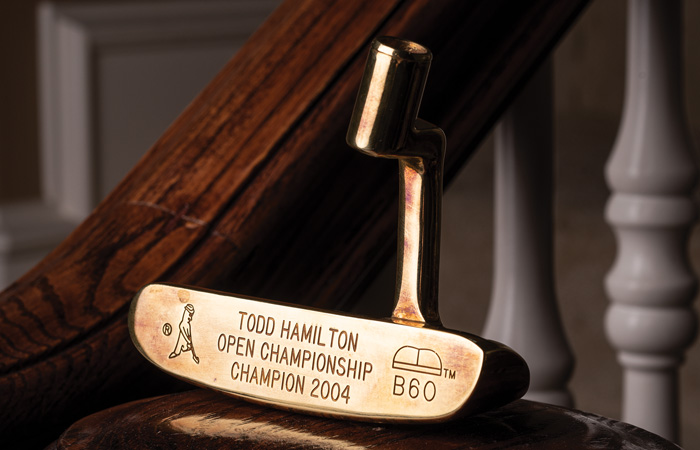
AG: When you got to keep the Claret Jug for the year, were there any uh-oh moments?
TH: There weren’t any. When I was at the house I would keep it in the case in the closet. I was always afraid that someone might try to break in and steal it. I would bring it out when people were over and wanted to see it, but that was about it. I didn’t want to be the guy known for getting the jug stolen. I was just happy to give it back in one piece.
AG: Would you rather have the one major victory, or would you trade it for 10 PGA TOUR wins?
TH: No question I would rather have one major win than 10 regular PGA TOUR wins.
AG: The other three majors aside, is there another PGA TOUR event or venue where you wish you had won?
TH: I wish I had won at the John Deere Classic. It’s in Silvis, Illinois. It’s about an hour from where I grew up. I think the closest I came was a tie for tenth.
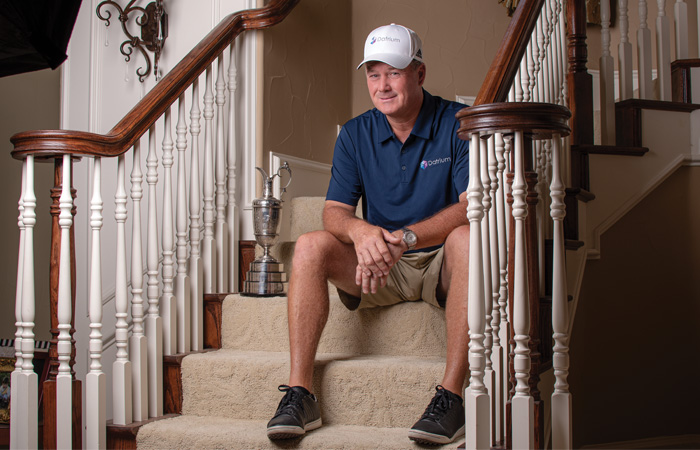
AG: Is there a player you never got to play with that you would have liked to have played with?
TH: I would’ve liked to have played with Jack Nicklaus at some point. He’s a bit older than me, so our paths never crossed on the golf course, but he’s definitely one I would’ve liked to see play.
AG: You’ve had some success on the Champions Tour. Do you find it to be more relaxed than the PGA? Is it more about having fun and staying active, or is it still a pressure cooker?
TH: The Champions Tour is definitely more relaxing. Seemed like on the PGA you were focused from the time you wake up until the time you went to bed. Don’t get me wrong, we’re all competitive and want to win, but it’s almost more of a been there, done that kind of mentality on the Champions Tour.
AG: When you play a Champions Event, do they still announce you as the 2004 Open champ?
TH: They don’t. And to be honest, I don’t even think they do that at the Open Championship either.
AG: Did you anticipate more exemptions on the Champions Tour being a major winner?
TH: I am a little disappointed that I haven’t gotten any champions invites or sponsor’s picks. Guess I just need to work harder, so I won’t have to rely on those.
AG: This question is cliché, but I think it really gives our readers some insight into the person we’re interviewing. So, give us your dream foursome. Can be anyone.
TH: Dream foursome would have to be myself, Jack Nicklaus, Tiger Woods and just in case the golf is bad, let’s throw in Pamela Anderson.
AVIDGOLFER would like to thank the Vaquero Club for their hospitality.



